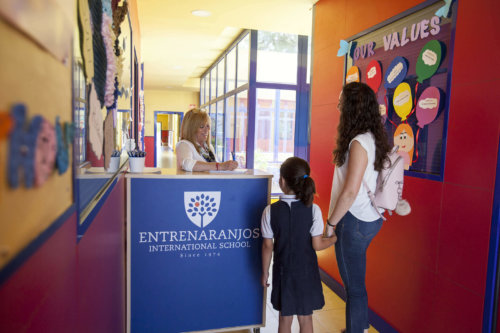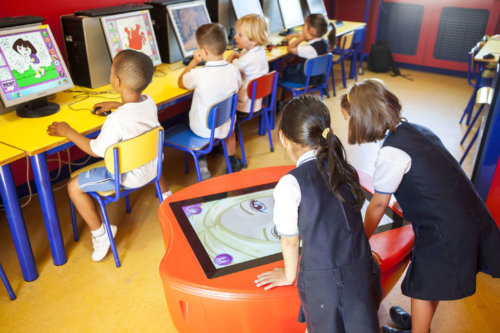Early Years
Early Childhood education offers children a wider variety of relationships, both with adults and other children of the same age. It also enables them to participate in organized activities that helps to ensure a harmonious and integrated development.
The first cycle of education is for children between eight months and three years of age. In this initial stage of education, in which the family and school share the aim of providing their children with an integrated education, our centre fosters communication with the family in the belief that this relationship is essential for the success of early education, providing the child with security, motivation and shared guidelines.
It is fundamental to put in place the foundations for this learning, teaching students freedom and tolerance. Thus, our objectives must be consistent with the home environment of the student in order to encourage the fulfillment of these objectives.
To ensure that communication is fluid and effective we use DAILY diaries. Given that needs differ, these calendars are specific to each level. These calendars record personal behaviour, food consumption, bowel movements and anyrest other relevant information.
For the youngest children, mealtime is a very special time of the day. We attempt to facilitate the transition from the ingestion of liquid foods to semi-solids, but without accelerating the natural process. Good childhood eating standards and/or habits are very important to child development, and must be monitored from the very early stages of their growth. Thus, with the help of their teachers, children acquire the habits and independence required for their development. After mealtime, children up to the age of three have a siesta in the area in their classroom specially set aside for this purpose.
The first cycle of education is for children between eight months and three years of age. In this initial stage of education, in which the family and school share the aim of providing their children with an integrated education, our centre fosters communication with the family in the belief that this relationship is essential for the success of early education, providing the child with security, motivation and shared guidelines.
It is fundamental to put in place the foundations for this learning, teaching students freedom and tolerance. Thus, our objectives must be consistent with the home environment of the student in order to encourage the fulfillment of these objectives.
To ensure that communication is fluid and effective we use DAILY diaries. Given that needs differ, these calendars are specific to each level. These calendars record personal behaviour, food consumption, bowel movements and anyrest other relevant information.
For the youngest children, mealtime is a very special time of the day. We attempt to facilitate the transition from the ingestion of liquid foods to semi-solids, but without accelerating the natural process. Good childhood eating standards and/or habits are very important to child development, and must be monitored from the very early stages of their growth. Thus, with the help of their teachers, children acquire the habits and independence required for their development. After mealtime, children up to the age of three have a siesta in the area in their classroom specially set aside for this purpose.
The second cycle of child education is for children between three and six years of age. During this cycle, communication with families is maintained through a calendar and curricular content of greater importance is introduced, as is the use of technology and of English as the language of communication and instruction.
Based on the principle of “globality” we use an active methodology, given that activity is necessary for development, in which the child is considered the protagonist in the teaching-learning process. This activity alternates play and work, encouraging personal enrichment and social relationships between boys and girls. At the same time, our working method puts great stock in the personal characteristics of each child. As a result, each child is given individualised treatment according to their development, without forcing their pace of learning.
Our childhood school consists of different spaces to encourage the psychomotor development that is so important at this age. Outdoor recreation areas are demarcated for each cycle and have specific characteristics to promote psychomotor development in each stage of development. In the IT room and in the digital classroom, our students reinforce content through play, using English as the language of communication. The centre also has a judo and dance room for these extra-curricular activities, a sandpit and a pool adapted to the ages of the children in childhood education.















 English
English 中文
中文 Русский
Русский Español
Español